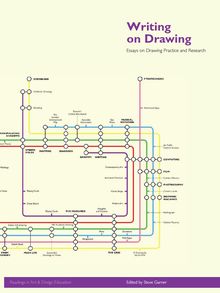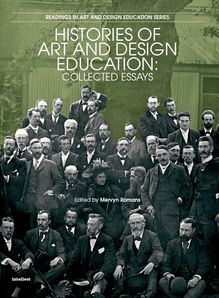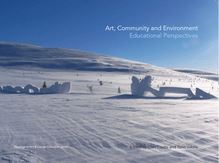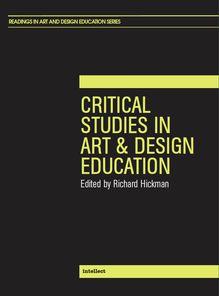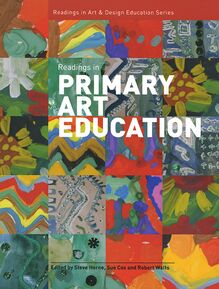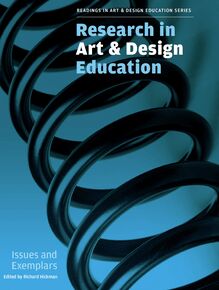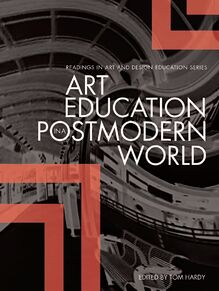-
 Univers
Univers
-
 Ebooks
Ebooks
-
 Livres audio
Livres audio
-
 Presse
Presse
-
 Podcasts
Podcasts
-
 BD
BD
-
 Documents
Documents
-
- Cours
- Révisions
- Ressources pédagogiques
- Sciences de l’éducation
- Manuels scolaires
- Langues
- Travaux de classe
- Annales de BEP
- Etudes supérieures
- Maternelle et primaire
- Fiches de lecture
- Orientation scolaire
- Méthodologie
- Corrigés de devoir
- Annales d’examens et concours
- Annales du bac
- Annales du brevet
- Rapports de stage
La lecture à portée de main
Vous pourrez modifier la taille du texte de cet ouvrage
Découvre YouScribe en t'inscrivant gratuitement
Je m'inscrisDécouvre YouScribe en t'inscrivant gratuitement
Je m'inscrisEn savoir plus
Vous pourrez modifier la taille du texte de cet ouvrage
En savoir plus

Description
Sujets
Informations
| Publié par | Intellect Books |
| Date de parution | 01 janvier 2008 |
| Nombre de lectures | 0 |
| EAN13 | 9781841502533 |
| Langue | English |
Informations légales : prix de location à la page 0,1900€. Cette information est donnée uniquement à titre indicatif conformément à la législation en vigueur.
Extrait
Research in Art Design Education
Issues and Exemplars
Research in Art Design Education
Issues and Exemplars
Edited by Richard Hickman
Series editor: John Steers
First Published in the UK in 2008 by Intellect Books, The Mill, Parnall Road, Fishponds, Bristol, BS16 3JG, UK
First published in the USA in 2008 by Intellect Books, The University of Chicago Press, 1427 E. 60th Street, Chicago, IL 60637, USA
Copyright 2008 NSEAD
All rights reserved. No part of this publication may be reproduced, stored in a retrieval system, or transmitted, in any form or by any means, electronic, mechanical, photocopying, recording, or otherwise, without written permission.
Series: Readings in Art and Design Education Series Editor: John Steers
A catalogue record for this book is available from the British Library.
Cover Design: Gabriel Solomons Copy Editor: Holly Spradling Typesetting: Mac Style, Nafferton, E.Yorkshire
ISSN: 1747-6208
ISBN 978-1-84150-199-4/EISBN 978-1-84150-253-3
Printed and bound by Gutenberg Press, Malta.
C ONTENTS
Acknowledgements
Preface
Foreword
Maurice Galton
Introduction
Richard Hickman
Chapter 1: The Nature of Research in Arts Education
Richard Hickman
Chapter 2: The Art of Research: Art Teachers Affinity with Ethnography
Martyn Denscombe
Chapter 3: Systematic Reviewing: Lessons for Art and Design Education Research
Rachel Mason
Chapter 4: Using Participatory Visual Ethnography to Explore Young People s Use of Visual Material Culture in Place and Space
Kristen Ali Eglinton
Chapter 5: When is Yesterday Coming Again? The Impact of Arts-rich Partnerships in Early Years Education
Anne Bamford
Chapter 6: Daily Life: A Pre-service Art-teacher Educator and her Work
Lynn Beudert
Chapter 7: A Dual Inheritance: The Politics of Educational Reform and PhDs in Art and Design
Fiona Candlin
Chapter 8: Practice-based Research Degree Students in Art and Design: Identity and Adaptation
John Hockey
Chapter 9: School Art: What s in It?
Dick Downing
Chapter 10: A Preliminary Survey of Drawing Manuals in Britain c. 1825-1875
Rafael C. Denis
Chapter 11: Early Obsessive Drawings and Personal Development
Sheila Paine
Chapter 12: Young People, Photography and Engagement
Nick Stanley
Chapter 13: Constructing Neonarratives: A Pluralistic Approach to Research
Robyn Stewart
Chapter 14: The Narrative Approach in Art Education: A Case Study
Gabriele Esser-Hall, Jeff Rankin and Dumile Johannes Ndita
Chapter 15: A Cross-cultural Study of Art-teacher Education in Taiwan and England
Mei-Lan Lo
A Glossary of Research Terms in Arts Education
Notes on Contributors
Index
A CKNOWLEDGEMENTS
I am indebted to all of the contributors, many of whom have spent considerable time in revising their work for this edition. I would like to thank the University of Cambridge Faculty of Education for giving me time and space and also to thank Keith Winser and Kristen Eglinton for dealing with the things I should have been dealing with instead of compiling this book. Thanks are also due to Jo Styles for her technical support.
I am particularly grateful to Anastasia Planitsiadou and Alexander Byron Hickman for reminding me of what is important.
P REFACE
This book is the fifth in a planned series of anthologies dealing with a range of issues in art and design education. The previously published titles in the Readings in Art and Design Education series are Critical Studies in Art Design Education, Postmodernism and Art and Design Education: Collected Essays, Histories of Art and Design Education and The Problem of Assessment in Art Design . Further titles are in preparation.
The primary - but not exclusive - source of chapters are papers previously published in the [ International] Journal of Art Design Education and where appropriate these have been updated. It should be noted that any references to the English National Curriculum statutory Orders etc., are to the version of the curriculum current at the time of the original publication.
The National Society for Education in Art and Design is the leading national authority in the United Kingdom, combining professional association and trade union functions, which represents every facet of art, craft and design in education. Its authority is partly based upon a century-long concern for the subject, established contacts within government and local authority departments, and a breadth of membership drawn from every sector of education from the primary school to universities.
More information about the Society and its range of publications is available at www.nsead.org or from NSEAD, The Gatehouse, Corsham Court, Corsham, Wiltshire SN13 0BZ, United Kingdom. (Tel: +44 (0)1249 714825).
John Steers Series Editor
F OREWORD
This is a timely book. In recent years there has been a growing awareness in many countries that the arts have been squeezed out of the curriculum in the pursuit of raising attainment in literacy and numeracy. Both the western and the tiger economies around the Pacific Rim have seen their manufacturing base eroded by the emergence of China and India as producers of cheaper goods. As a consequence, some policymakers have sought to emphasize the importance of developing future generation of pupils who will be creative risk takers, capable of developing new sources of national wealth. The art and design subjects are perceived to be an important means to this end.
Practice, however, often lags behind the best of intentions. In the United Kingdom, for example, research shows that the standards agenda, with the publication of league tables indicating how well schools have done in the National Assessments at primary and secondary level, has resulted in some pupils being excluded from arts and music lessons. In primary schools design has sometimes been restricted to the six-week period following the end of the Year 6 statutory tests in May. In England, it is significant that the attempt to revive arts in schools has been led not from the Department for Education and Skills but from within the Department of Culture, Media and Sport. The latter s sponsorship of the Creative Partnership programme, to the tune of over a hundred million pounds, has marked a resurgence in interest in arts education.
But problems remain. For many decades, particularly before the introduction of the National Curriculum into English schools, there have been artists working alongside teachers in schools. These collaborations have produced some outstanding work but the anecdotal evidence is that once the artist leaves things return to the way they were before the artist arrived in the school. Teachers tend to attribute the high quality work that pupils produce to the fact that the artist is an expert in his specialist medium, whereas the most significant changes tend to involve pupil attitudes and motivation, which in some way must be linked to the artists pedagogy. Unfortunately, like many experts, their mode of practice appears to be largely intuitive so that the artists are often unable to articulate clearly why they behave in certain ways in their interactions with pupils. To create sustainable changes in the way that art and design is taught in schools it will be necessary to make explicit what at the moment appears implicit. This will require not only more research in art education, on a larger scale than previously, but the development of new approaches that explore what Andy Hargreaves has described as the emotional geographies of teaching . 1
This edited volume does several things that have a bearing on the above discussion. First the writers provide accounts of the use of different research methodologies and in some cases offer perspectives on new possibilities. Advances of this kind are urgently required if research in the arts is to be recognized as worthy of serious funding. Second, some chapters address topics that have an obvious importance in attempts to improve the quality of art education, for example, chapters that address the issues of pre-service and postgraduate training.
Over the last decade, despite the government s public denials, pupils attitudes to school and in particular to science and mathematics have declined year by year. A recent survey of secondary pupils found that only 27 per cent said they found school interesting. Yet at transfer from primary to secondary school pupils express a strong preference for arts and design subjects. Improved arts education, therefore, offers a way of rekindling pupil interest and motivation as well as fostering the originality and the entrepreneurial spirit that governments around the world are calling on their schools to implement. This book can make an important contribution to this process of renewal.
Note
1 . Hargreaves, A. (2001). The Emotional Geographies of Teaching. In Teachers College Record 103:(6), 1056-1080.
Professor Maurice Galton University of Cambridge
I NTRODUCTION
Richard Hickman
This collection of papers attempts to give an overview of the current state of research in art and design education, as indicated by their publication in the International Journal of Art Design Education ( iJADE ). All phases of art design education are addressed - from pre-school to higher education. In addition to those originally published in iJADE , several chapters have been commissioned especially for this book, notably those by Kristen Ali Eglinton, Anne Bamford and Rachel Mason, who raise timely and interesting issues about the character and direction of research in art education. The book has two related aspects: one deals largely with issues , exemplified by Mason s chapter, while the other presents examples of recent and current practice in art educational research, exemplified by Bamford s chapter.
Although there is much to celebrate, research within art education remains underdeveloped when compared with other cognate areas. There is a dearth of rigorous in
-
 Univers
Univers
-
 Ebooks
Ebooks
-
 Livres audio
Livres audio
-
 Presse
Presse
-
 Podcasts
Podcasts
-
 BD
BD
-
 Documents
Documents
-
Jeunesse
-
Littérature
-
Ressources professionnelles
-
Santé et bien-être
-
Savoirs
-
Education
-
Loisirs et hobbies
-
Art, musique et cinéma
-
Actualité et débat de société
-
Jeunesse
-
Littérature
-
Ressources professionnelles
-
Santé et bien-être
-
Savoirs
-
Education
-
Loisirs et hobbies
-
Art, musique et cinéma
-
Actualité et débat de société
-
Actualités
-
Lifestyle
-
Presse jeunesse
-
Presse professionnelle
-
Pratique
-
Presse sportive
-
Presse internationale
-
Culture & Médias
-
Action et Aventures
-
Science-fiction et Fantasy
-
Société
-
Jeunesse
-
Littérature
-
Ressources professionnelles
-
Santé et bien-être
-
Savoirs
-
Education
-
Loisirs et hobbies
-
Art, musique et cinéma
-
Actualité et débat de société
- Cours
- Révisions
- Ressources pédagogiques
- Sciences de l’éducation
- Manuels scolaires
- Langues
- Travaux de classe
- Annales de BEP
- Etudes supérieures
- Maternelle et primaire
- Fiches de lecture
- Orientation scolaire
- Méthodologie
- Corrigés de devoir
- Annales d’examens et concours
- Annales du bac
- Annales du brevet
- Rapports de stage

